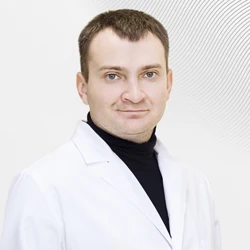Bipolar affective disorder
 Bipolar affective disorder (BAR) is a mental disorder characterized by alternating periods of depression and abnormally elated mood (mania), which can It can last from several days to several months.
Bipolar affective disorder (BAR) is a mental disorder characterized by alternating periods of depression and abnormally elated mood (mania), which can It can last from several days to several months.
The disease was first described in 1854 by two French psychiatrists, Jean-Pierre Falre and Jules Bayarge, but it was not officially included in the ICD until decades later. Until 1993, the pathology was called "manic-depressive psychosis", and the term "bipolar affective disorder" was introduced after the approval of ICD-10.
Etiology and pathogenesis of the disease
The causes of bipolar disorder have not been definitively established at the moment. It is known that the disease occurs under the influence of both internal and external factors. Among the probable causes of pathology are indicated:
-
Genetic predisposition. Many studies confirm that heredity affects the development of bipolar disorder. People with a burdened family history have a higher risk of affective mental disorders. It is assumed that a number of genes are involved in the development of the disease, which regulate the synthesis of neurotransmitters, synaptic transmission and circadian rhythms.
-
An imbalance of neurotransmitters. Neurotransmitters are biologically active substances that transmit electrochemical impulses between neurons. The key neurotransmitters that influence the development of the disease are serotonin, dopamine and norepinephrine. It has been experimentally proven that an imbalance of these hormones can lead to mood swings and mental disorders. For example, during mania, dopamine levels rise, which contributes to euphoria and impulsive behavior. On the contrary, episodes of depression are associated with a decrease in serotonin levels, a deficiency of which causes feelings of sadness and hopelessness.
-
Changes in the brain. Modern imaging techniques have made it possible to obtain information about changes in brain structures that are associated with bipolar disorder. Thus, studies have shown that patients suffering from this disease have changes in the prefrontal cortex, amygdala and hippocampus, that is, in those parts of the brain that are responsible for emotions and are involved in mood regulation. In addition, functional studies have shown the presence of abnormal activation patterns and connections between these brain regions during mood swings.
-
Dysregulation of circadian rhythms. It has been established that in patients with BAR, the internal biological clock that regulates physiological and behavioral cycles is disrupted. Studies show that a violation of the biological rhythm can be both the cause and consequence of the disease, negatively affects the course of the disease and complicates its treatment.
-
Environmental factors. Despite the fact that heredity and brain disorders play a leading role in the development of bipolar disorder, environmental factors can also trigger the appearance of symptoms of the disease. Acute and chronic stress, substance and alcohol abuse, and sleep disorders increase the risk of developing mental disorders and can worsen the course of the disease.
Scientific evidence on the association of the disease with the patient's gender varies. For a long time, it was believed that women suffer from bipolar affective disorder one and a half times more often than men. According to recent data, monopolar forms of pathology are more often detected in women, while bipolar forms are more often diagnosed in men. The risk of developing the disease in women increases during periods of hormonal changes — after childbirth and during menopause.
Forms of bipolar affective disorder

In clinical practice, the classification of manic-depressive psychosis has become the most widespread, taking into account the features of the course of affective disorder — the predominance of depression or mania, as well as the features of alternating manic and depressive episodes. If only one type of disorder is detected in the patient, a diagnosis of unipolar manic-depressive psychosis is made, if both variants are found, bipolar affective disorder is indicated.
The unipolar forms of manic-depressive psychosis include periodic depression and periodic mania.
The number of phases in each individual patient may vary during life. Some people may experience only one affective episode in their entire life, while others may experience several dozen. The duration of one episode ranges from one week to two years, the average duration of the phase is usually several months.
As a rule, depressive episodes occur more often than manic ones, on average, depression lasts three times longer than mania. Some patients develop mixed episodes in which symptoms of depression and mania occur simultaneously, or depression and mania alternate rapidly. The average duration of the light period ranges from three to seven years.
Clinical picture of the disease: symptoms and phases
 Bipolar affective disorder is a complex psychopathological disorder in which affective phases of varying polarity and severity take place. The clinical picture of pathology includes episodes of mania, hypomania, major depressive disorders, mixed episodes, cyclothymia and rapid cycling.
Bipolar affective disorder is a complex psychopathological disorder in which affective phases of varying polarity and severity take place. The clinical picture of pathology includes episodes of mania, hypomania, major depressive disorders, mixed episodes, cyclothymia and rapid cycling.
Mania
Manic episodes are characterized by an inadequately elated mood, which can range from gratuitous fun to uncontrollable excitement. Mood elevation is accompanied by hyperactivity, speech pressure, and a reduced need for sleep. It becomes difficult for the patient to keep his attention, he is constantly distracted, may commit thoughtless impractical acts, express overoptimistic ideas. In some patients, inflated self-esteem and ideas of superiority turn into delusions of greatness, and irritability and suspicion turn into delusions of persecution.
Hypomania
Hypomania is a mild degree of mania that may be accompanied by psychosomatic symptoms: delusions or hallucinations. For several days or longer, patients experience a rise in mood, energy, feelings of well-being, talkativeness, and decreased need for sleep. As a rule, the symptoms of the disease are moderate, so they do not lead to social maladaptation and do not lead to serious problems at work. However, in some patients during the hypomania phase, irritability, overestimated self-esteem, and rude behavior are observed instead of mood elevation, which can lead to conflict situations at work and at home.
Depression
In the depressive phase, patients develop symptoms that are the opposite of those of mania: motor and mental retardation, marked mood loss, loss of appetite. In women, the menstrual cycle is often disrupted until the complete cessation of menstruation, and sexual desire disappears in patients of both sexes. In mild forms of the disorder, diurnal mood swings are observed. In the morning, the severity of the symptoms reaches a maximum, in the evening, on the contrary, it weakens. As many patients age, depression gradually becomes anxiety-related.
Bipolar affective disorder can cause five forms of depression: simple, hypochondriac, delusional, agitated and anesthetic.
Mixed episodes
Mixed manic-depressive episodes include conditions in which patients experience symptoms of both mania and depression. They can occur at any stage of the disease, cause difficulties in diagnosis and choice of treatment, and often turn out to be resistant. The boundaries between mania and a mixed state are unclear, as depression is often hidden behind manic symptoms and is easily provoked by situational factors. The appearance of mixed episodes in the clinical picture is considered a predictor of an unfavorable prognosis of the disease.
Cyclothymia
Cyclothymia is characterized by the presence of prolonged subdepressive and hypomanic symptoms. There are no pronounced depressive disorders or episodes of "pure" mania. Cyclothymia is diagnosed in cases where the patient has been experiencing frequent bouts of depressed mood for at least two years, alternating with episodes of hypomania. Patients with such disorders should be monitored by a psychiatrist, as cyclothymia can transform into a typical bipolar disorder at any time.
Rapid cycling
The criterion for rapid cycling is the presence of at least four episodes of bipolar disorder per year with partial or complete remission between them or a direct switch from one polarity to another another one (from depression to mania or vice versa). This form of the disease is diagnosed in approximately 10-15% of patients, and it is more common in women and in the later stages of the disease.
Diagnostic methods
Diagnosis requires two or more episodes of mood disorders, with at least one episode being manic or mixed. The criteria for a depressive episode for diagnosis are:
-
depressed mood most of the day, every or almost every day;
-
decreased interest in life;
-
weight loss of more than 5% per month without dieting or sudden fluctuations in appetite;
-
sleep disorders;
-
lethargy or psychomotor agitation;
-
constant feeling of fatigue;
-
feelings of worthlessness or excessive guilt;
-
decreased concentration of attention;
-
suicidal thoughts.
A diagnosis of bipolar disorder can be made if a patient has five or more symptoms lasting for two weeks, provided that one of the symptoms is a depressed mood or loss of interest in life.
The diagnostic criteria for an episode of mania in BAR are:
-
excessive self-esteem, self-importance;
-
reduced need for sleep;
-
increased talkativeness;
-
"flight of thought";
-
instability of attention;
-
psychomotor excitability, increased sexual activity;
-
willingness to take risky unjustified actions.
The diagnosis of bipolar disorder can be made if the patient has three or more of these symptoms of the disease.
When examining a patient, a psychiatrist takes into account many factors, including paying attention to family history. Special scales and tests for the diagnosis of mental disorders are used to assess the severity of the condition.
Treatment of bipolar disorder
The main goal of therapy is to prevent the development of acute conditions and maintain long-term remission. The treatment program is designed individually and includes active and preventive therapy.
Active therapy
Active therapy is aimed directly at relieving a painful condition: depression or mania. Depending on the severity of the condition, treatment is performed on an outpatient basis or in a hospital. Some serious conditions, including severe depression with a suicidal risk, with bipolar disorder should be treated only in a hospital.
At the EMC Medical Center, the hospital is located within a multifunctional clinic, so if necessary, doctors of other specialties are involved in the patient's treatment.: cardiologists, neurologists, and endocrinologists. The interdisciplinary approach allows doctors to conduct a comprehensive assessment of the problem, take into account all aspects of the patient's health and, therefore, offer the most effective therapeutic programs.
Preventive therapy
Preventive therapy is performed after the symptoms of mania or depression are relieved. Its purpose is to prevent new episodes of the disease and to develop the patient's emotional self-control skills.
A distinctive feature of the approach to the treatment of bipolar affective disorder at the EMC clinic is complex therapy: the patient receives not only pharmacotherapy, but also psychotherapeutic care that forms the right attitude to the disease, increases motivation for treatment and increases the chances of long-term remission.
The therapy program may include both medical and non-medical treatment methods, such as transcranial magnetic stimulation and BOS therapy. Additionally, the patient's relatives are trained, which allows them to provide the necessary psychological support.
The EMC Clinic provides outpatient and inpatient treatment for mental disorders of any severity. A team of expert doctors with many years of experience develops an individual treatment and rehabilitation regimen for each patient.
Disease prognosis
During the inter-onset period, the patient's mental functions are fully or almost completely restored, but the prognosis for bipolar disorder cannot be considered favorable. Repeated episodes of the disease develop in almost 90% of patients, and in 30% of patients, manic-depressive psychosis occurs continuously, without “light” intervals. In addition, the disease is often combined with other mental disorders, so it is difficult to predict how the situation will develop in each specific case.
Question — answer
How does the diagnosis affect the relationship?
Having a diagnosis of bipolar disorder does not mean that a person will have relationship problems. However, some symptoms can cause tension and difficulty communicating. If both partners understand that any relationship requires empathy and emotional awareness, and seek qualified medical help, they will be able to build a long-term healthy union.
What should people with bipolar disorder not do?
Patients should strictly follow all the doctor's recommendations, not skip or stop taking medications, even if their mental state has stabilized. They are advised to avoid stressful situations, it is forbidden to use alcohol, narcotic substances and other psychostimulants.
Is it possible to work with a BAR?
A diagnosis of bipolar disorder is not an obstacle to work. It all depends on the severity of the disease. With mild forms of pathology, most patients remain fully functional throughout their lives. However, such people are advised to avoid work associated with high mental stress and stress.
Sources:
- Tyuvina N. A., Smirnova V. N. Bipolar affective disorder: course features and supportive pharmacotherapy // Неврология , neuropsychiatry, psychosomatics. - 2013. — pp. 87-95.
- Sturov N. V., Romanova O. L. Bipolar disorders: clinical picture and principles of therapy // Difficult patient. - 2008. — No. 4, Volume 6. — pp. 49-54.
- Tyuvina N. A., Stolyarova A. E., Smirnova V. N. Bipolar affective disorder: gender-specific features of course and therapy // S. S. Korsakov Journal of Neurology and Psychiatry. — 2019. — № 119 (12). — Pp. 162-169.
Why the EMC
The first and only clinic in Russia, created in the image of the world's leading clinics
EMC is a multidisciplinary center offering patients a high level of medical services and a personalized approach
Worldwide recognition and awards
 Learn more
Learn more
Worldwide recognition and awards
 Certificates and licenses
Certificates and licenses
Make an appointment for a consultation
Specify your contacts and we will contact you to clarify the details
and new products of the EMC





.webp)

.webp)




.webp)





.webp)

